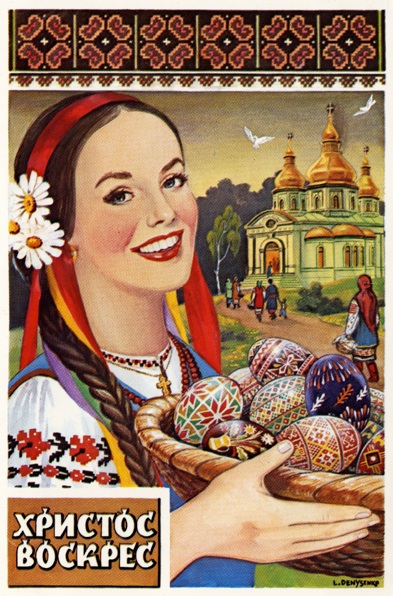Traditions:
Sharing Pysanky
Traditions:
Sharing Pysanky

Sharing Pysanky
Pysanky were made not simply for one’s own ritual uses, but also to be given away, both to family members and respected outsiders. To give a pysanka was to give a symbolic gift of life, which is why the egg had to remain whole. The designs and colors on a pysanka deep, symbolic meanings, meant to convey to the recipient protection and good fortune.
Traditionally, pysanka designs were repeated from year to year, and carefully written so as to preserve their magic. Different wishes and purposes dictated different pysanky being given to individuals.
In modern times, and particularly in the diaspora, pysanky have become merely decorative objects, and are selected for gifts not for their talismanic powers, but for their beauty, color scheme and workmanship. Often modern pysankary try to match the pysanka to the character of the person to whom the pysanka is to be given.
A bowl of pysanky would normally be found in every house, often near the icons, to doubly protect a household. Often they would be fashioned into small birds, with heads of dough and paper wings and tail, and hung near the icons. Today pysanky, both one’s own and those received as gifts, are displayed prominently in a public room of the house.
In a large family, by Holy Thursday, some sixty (60) eggs would have been completed. They would then be taken to the church on Easter Sunday to be blessed with the baskets, after which many of them were given away.
❖ One or two would be given to the priest.
❖ Three or four were taken to the cemetery and placed on graves of the family.
❖ Ten or fifteen were given to children or godchildren.
❖ Ten or twelve were exchanged by the unmarried girls with the eligible men in the community.
❖ Several were saved to place in the coffin of loved ones who might die during the year.
Everyone from the youngest to the oldest received a pysanka for Easter. Young people were given pysanky with bright designs; dark pysanky were given to older people.
Back to Traditions home page
Back to MAIN Pysanka home page.
Back to Pysanka Index.
